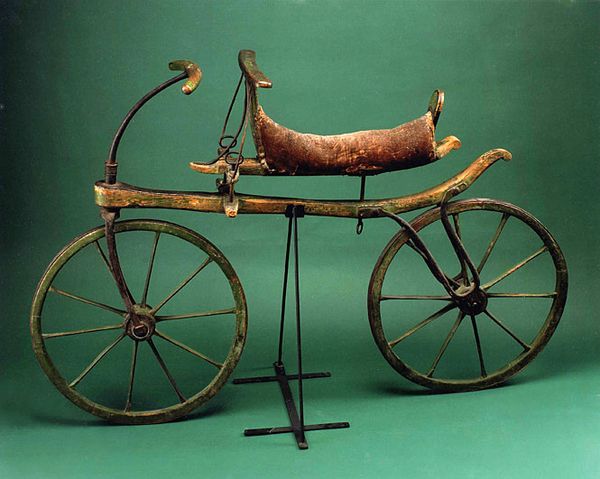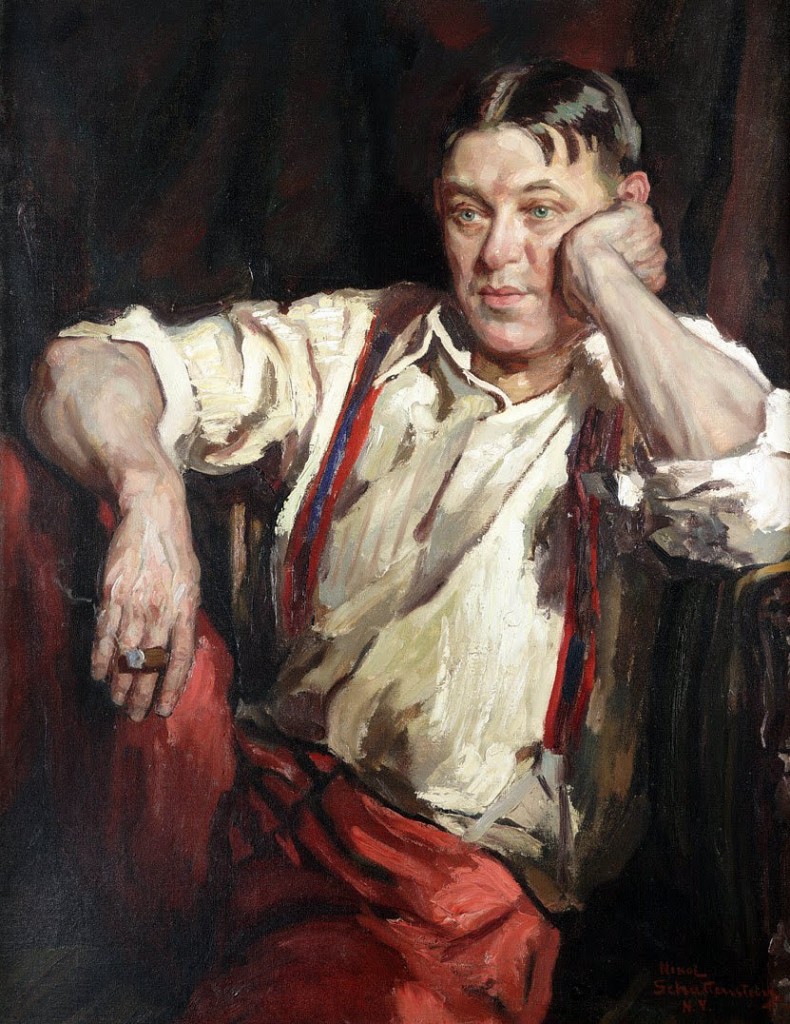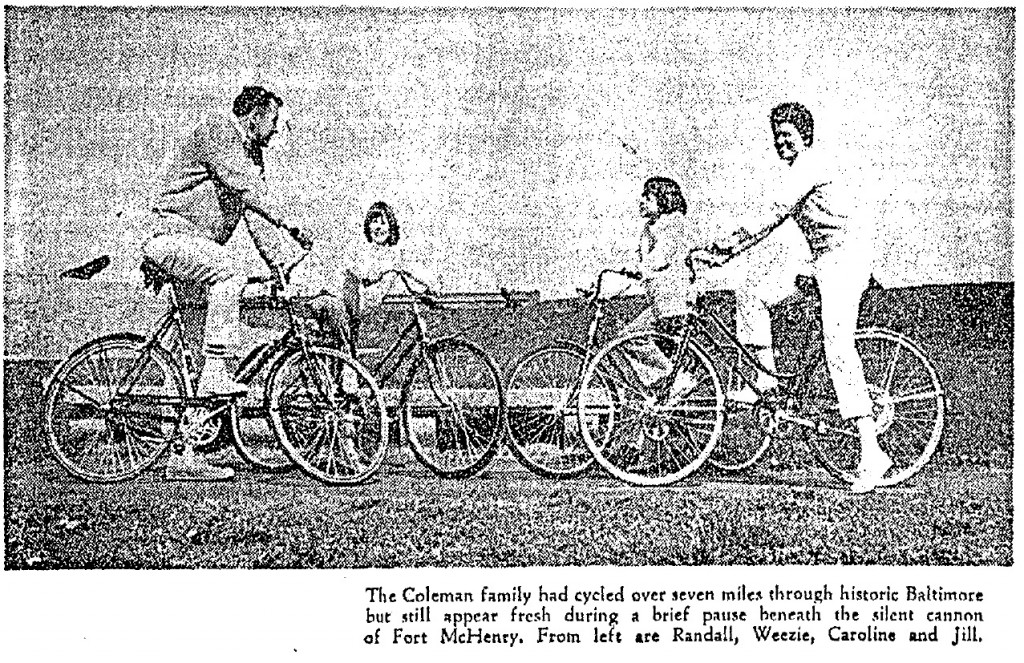Baltimore: Birthplace of the American Bicycle
Baltimore has a little-known but unique association with the early history of the bicycle. Invented in Germany in 1816, the velocipede was an early ancestor of the modern “safety” bicycle. In late 1818, a Baltimore piano-maker built the first velocipede in the United States – making our city the true birthplace of the American bicycle.
![Image: "Art. XV.–The Velocipede or Draisena [From a London paper]” in The Analectic Magazine, 1819. From Dorothy Sloan - Rare Books.](https://baltimoreheritage.org/wp-content/uploads/2014/07/mr-boh-velocipede.jpg)
Where some only saw a chance for ridicule, Baltimore piano-maker James Stewart saw an opportunity. In late 1818, Stewart crafted the first velocipede manufactured in the United States and, in February 1819, put it on display downtown at the Concert Hall (built around 1813 on South Charles Street).

A polarizing debate followed. The Federal Republican and Baltimore Telegraph sneered: “A curious two-wheeled vehicle called the Velocipede has been invented, which is propelled by Jack-asses instead of horses.” 80 year old Charles Wilson Peale stopped by to see the velocipede on his way back to Philadelphia after painting portraits of President James Monroe, Henry Clay and black freeman Yarrow Mamout. The velocipede quickly won Peale’s heart and when he arrived home in Philadelphia he commissioned a local blacksmith to make him one of his own.
Through our partnership with the Maryland Historical Society we are excited to share this story and many more on the history and local landmarks of cycling. Please join us on August 7 as we celebrate the Baltimore and the bicycle!
Bicycles in Baltimore: A Timeline History

1818: Baltimore piano-maker James Stewart exhibits the first velocipede made in the United States
In late 1818, Stewart crafted the first velocipede manufactured in the United States and, in February 1819, put it on display downtown at the Concert Hall (built around 1813 on South Charles Street). A polarizing debate followed. The Federal Republican and Baltimore Telegraph sneered:
“A curious two-wheeled vehicle called the Velocipede has been invented, which is propelled by Jack-asses instead of horses.”
Image courtesy the Smithsonian Institution.

1876: Timms & Lawford import the first English safety bicycles to the U.S.
In 1876, the Baltimore firm of Timms & Lawford imported a number of English “safety” bicycles to exhibit at the the Centennial Exhibition in Philadelphia. The firm played an critical role in the revival of bicycling in the 1870s after their stock sold to a Boston businessman who started regularly importing the bicycles into the United States.
Image courtesy the Library Company of Philadelphia.

1889: H.L. Mencken learns to ride
H.L. Mencken learned to ride a bicycle in the lot behind a bicycle shop owned by Joseph Wiesenfeld at the southwest corner of West Baltimore and Paca Streets. He recalled the story in a piece from Mencken on Mencken, a collection of autobiographical writing originally published in the New Yorker and Esquire during the 1940s:
…in an ancient two-story house which still stands, was Joe Wiesenfeld’s bicycle shop, and at the rear of it was a large yard, floored like a room. On that floor, coached by one of Little Joe’s salesmen, I learned to ride a bicycle. It all seems remote and archaic today, like mastering the subtleties of medieval equitation. But bicycling was a great and urgent matter in 1889, when the pneumatic tire came in.
Portrait by Nikol Schattenstein, 1927. Courtesy Enoch Pratt Free Library.

1914: Babe Ruth buys a bicycle
In the spring of 1914, during the first season of Babe Ruth’s professional baseball career, when received his first paycheck, the first purchase he made was a bicycle. According to his recollections published in The Babe Ruth Story, Babe shared the story with Bob Considine:
“I went out and celebrated, just as soon as I got my first paycheck – $100. I bought a bicycle, something that I had wanted and often prayed for through most of my young life. Most of the Orioles, of course, had cars, but none of them was as proud as I was, riding the first possession of my life through the old streets of Baltimore.”

1936: Lucille and Samuel Davis open a Cycle Shop at Park Circle
Lucille and Samuel Davis arrived in Baltimore from Princeton, New Jersey in 1936 and opened the Princeton Cycle Company at 3301 Park Circle. Just a couple years after opening their shop, they won a concession from the Baltimore Parks Department to open a bicycle rental stand near Druid Lake, then – like today – a popular area for cycling. The stand remained open renting single-speed, foot-braked Schwinn cruisers through 1947 renting bikes. In Glimpses of Jewish Baltimore (2012), Sandler quotes an interview with Samuel and Lucille’s son – Bernard “Sonny” Davis:
I started working there when I was eight years old — my father opened at Park Circle in 1936 and left the area in 1951. At our Park Circle shop we had as many as fifty bikes out at one time — and far more at our location in Druid Hill Park near the reservoir. We charged twenty-five cents an hour, and we were the first in our business to offer bikes with training wheels so kids and moms could keep up with dads.Amazingly, we did big business after 11:00 pm, when the waiters and waitresses getting of work at the Hot Shoppe would start their midnight bike riding in the park.
Photograph of Libby Bark, Ida Konig, and Eve (later Topel) in front of the Princeton Cycle Company on Park Circle, c. 1938. Courtesy the Jewish Museum of Maryland, 1987.019.037.

1971: Jill Coleman organizes a historic Baltimore ”bikehike”
In 1971, Jill Coleman planned a “bike hike” of Baltimore’s historic landmarks for the Maryland Commission on Physical Fitness. Writer Jack Dawson, who also worked as the sports director and evening news sports anchor for WMAR-TV, described morning test run with the Coleman family, across Downtown, Fell’s Point, and South Baltimore to Fort McHenry in The Baltimore Sun:
It was obvious Mrs. Coleman had mapped out a good route for the Maryland Commission on Physical Fitness bike hike from 9 a.m. to noon next Sunday, “If we can just get a good day and a turnout, then we’ll be in clover,” she said. “I’ve made the tour four times now and each time I’ve discovered new things. The more you explore, the more you find there is to explore.”
Image courtesy ProQuest Historic Newspapers.
Early advertisement for the “New Rapid” Bicycle by S.T. Clark & Co., Baltimore.
Bicycle at the Washington Monument.
